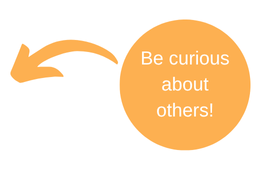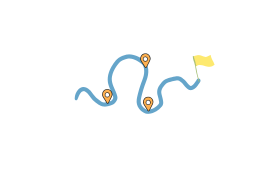Principles of i-THRIVE
Common Language
The language we use for the needs based areas was coproduced with partners & young people.
This is now used throughout the mental health system including new initiatives such as the Self-harm guidance, This is me pilot and the new commissioning of mental health services for children and young people.
 We also no longer refer to services in tiers instead we talk about needs and advocate for child friendly language. If you do this too, we can provide consistency in our approach and eliminate confusion.
We also no longer refer to services in tiers instead we talk about needs and advocate for child friendly language. If you do this too, we can provide consistency in our approach and eliminate confusion.
Needs Led Approach
You already use tools to assist in identifying need, such as the Resilience Conversation tool, but take time to check in with your practice, are you identifying a need or are you identifying a service to refer to?
Simply ask the individual what do they need and listen to what they are feeling/experiencing. This will help you ensure that if you should need to make a referral it will be clear on the need.
Shared Decision Making
When the child/young person owns the goal, and this goal is supported by those around them, such as parents and school, success is more likely to be achieved. So listen to their voices, acknowledge what they think will work, and ask them what hasn’t worked? Utilise the opportunity to collaborate and gain feedback.
Proactive Prevention and Promotion
Don’t forget the basics. It is important to have a conversation about how to stay well, self-care and self-help. Take a look at the resources available on sites such as MoodSpark and Health for Teens and get familiar with opportunities such as the Reading for Resilience group through the i-THRIVE & participation team. Support the community to develop their own tools using a strengths based approach and share what you already have.
Prevention and early intervention will reduce the need for more intensive specialist mental health services for children and young people in the future.
Partnership Working and Coproduction
You might not always think it, but you are the experts. Use your knowledge and expertise to support children and young people and share what is available such as self-help tools and local opportunities.
- When a young person says they have an adult they trust – check in – is that adult aware?
- What does that trusted adult need to know – do not assume that they have the same knowledge, tools and resources that you have.
- Attend the local Emotional Wellbeing Workshops. Get to know the staff in your local schools and services and local VCSE.
- Implement the Kent Participation Framework, to explore opportunities for young people. Contact VSK (VSK_participation@kent.gov.uk) and the i-THRIVE participation team (KYCC@kent.gov.uk) for support
Reducing Stigma and Inequalities
Mental health and emotional wellbeing is everyone’s business. Sometimes our first instinct is to ask ‘what mental health service do I refer to?’ but there may be existing support that is more appropriate and sustainable without the need for more specialist services.
What can you do?
- Tailored engagement – some young people respond well to walking and talking, or chatting over table tennis.
- Be aware of attitudes to mental health in different communities
- Support signposting & advocate for services. Use locally owned resources. Kent Resilience Hub has free webinars on a range of subjects including bitesize Resilience Webinars for parents/carers
Accessibility
By us all following the i-THRIVE framework and adhering to the principles we can ensure young peoples are met, and for those who do need a service they will get timely access to care treatment and support, with reduced waiting times, providing place-based support where Children and Young People spend most of their time. Service inequalities should be addressed during service development.

